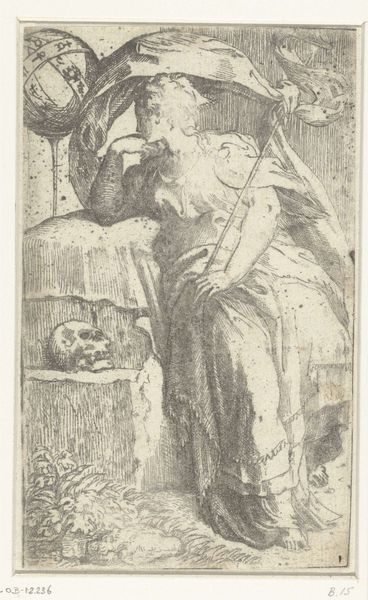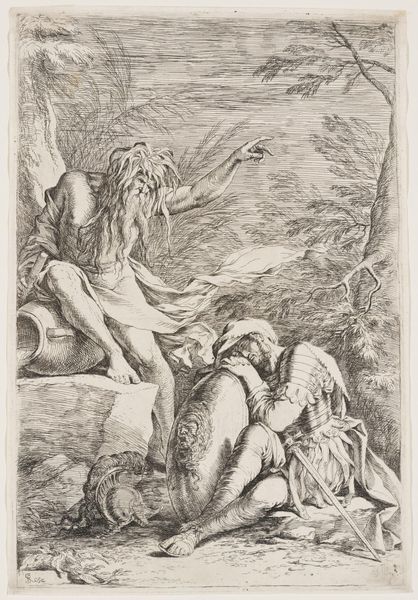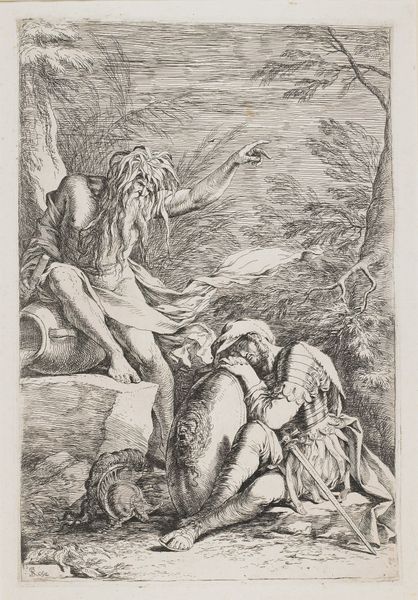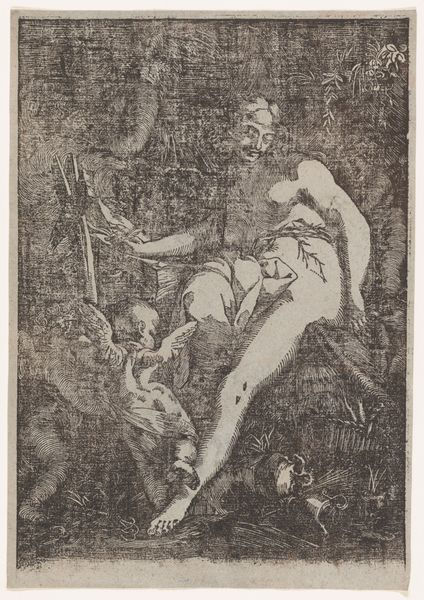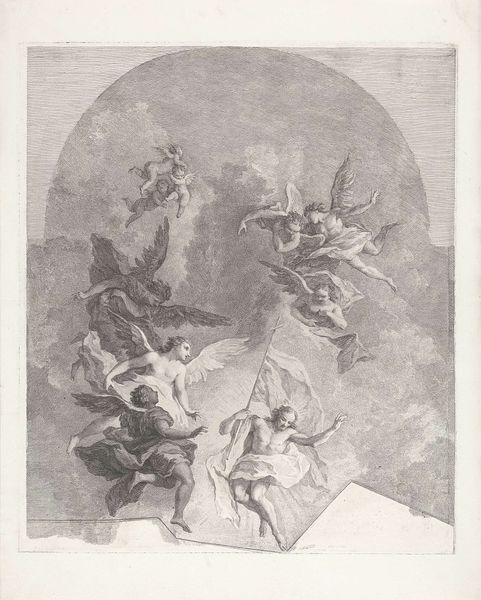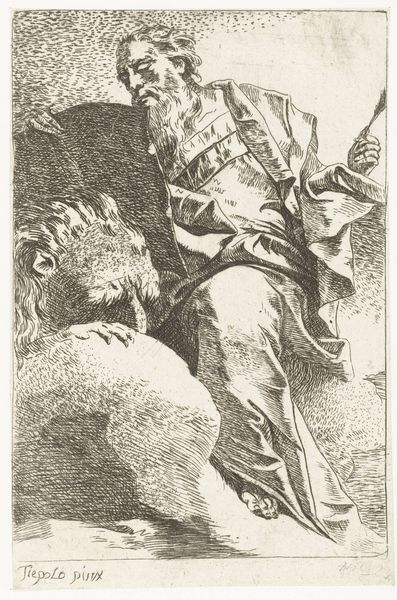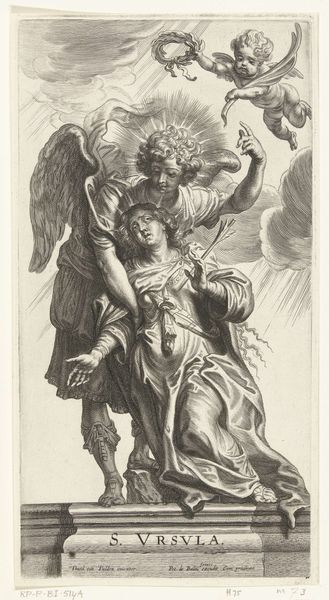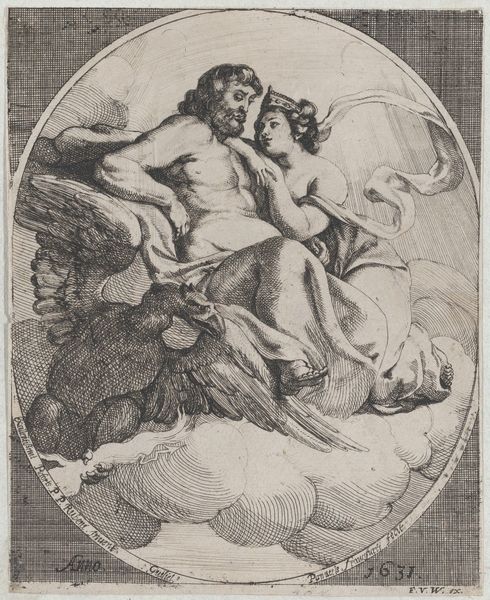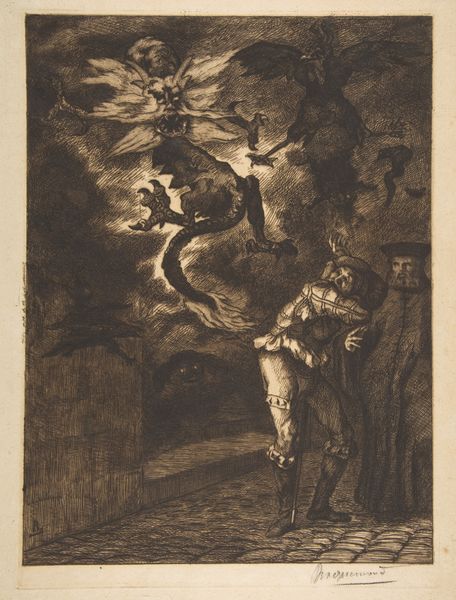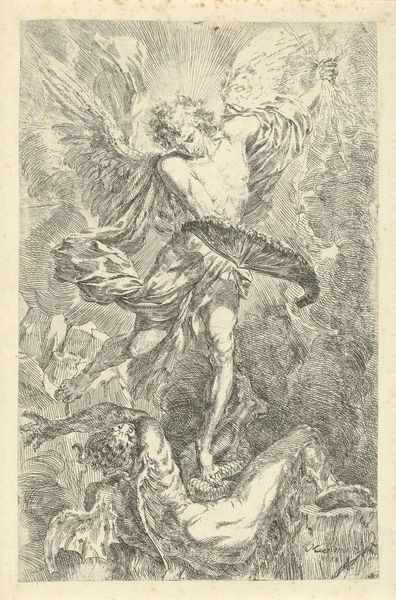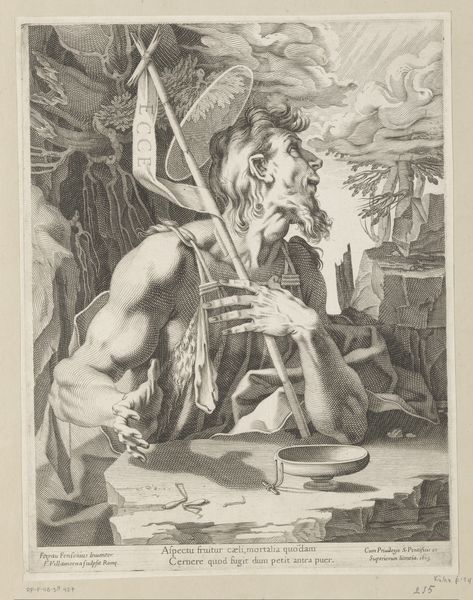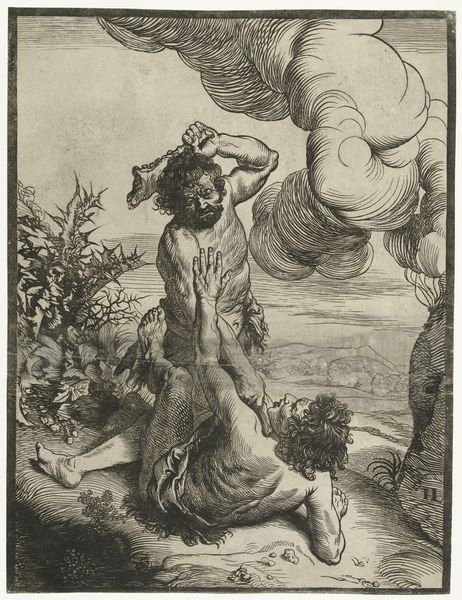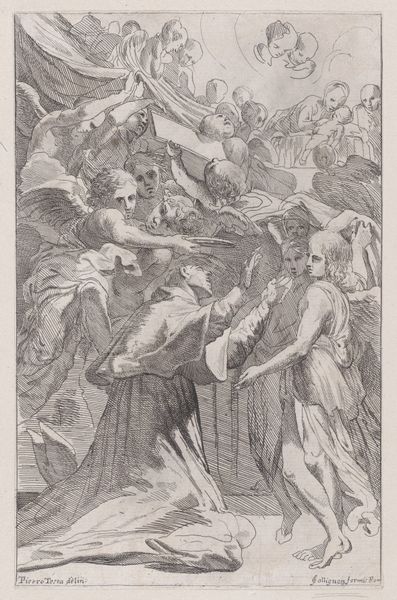
print, engraving
# print
#
mannerism
#
figuration
#
history-painting
#
engraving
Dimensions: height 240 mm, width 174 mm
Copyright: Rijks Museum: Open Domain
Curator: Looking at this print, entitled "Engelen dragen het lichaam van Christus", one is immediately struck by the raw emotion conveyed. Editor: It does feel almost ghostly. The figures are outlined rather than fully realized. Is it complete? Curator: This engraving, made after 1587, exemplifies Mannerist style and likely draws on familiar history-painting themes and the figure of Christ, so popular throughout European history. It is currently housed here at the Rijksmuseum. Let's explore the broader cultural implications. Considering this work through a feminist lens, for example, we can examine how the body of Christ becomes a site for exploring pain, sacrifice, and vulnerability, tropes traditionally associated with femininity in Western art history. Editor: Interesting. Thinking about it more from the social context of its creation, prints like this one played a vital role in disseminating religious imagery and influencing piety during the Counter-Reformation. These images weren't just aesthetic objects, but potent tools wielded by the church to shape public belief and reinforce doctrines about sacrifice, redemption, and the body of Christ. Curator: Yes, the emphasis on the suffering Christ also carries very heavy socio-political meanings, particularly the manipulation of guilt to control behaviors and justify societal norms. The symbolism can become even more troubling when race is brought into consideration. Editor: The composition draws attention as well. Notice how the anonymous artist has staged the scene? A large, craggy stone outcrop is positioned in the upper left quadrant. Are these supposed to be markers of Christ's entombment, creating a theatrical space to support such political symbolism? Curator: And the inclusion of angelic figures speaks to idealized forms. Consider the socio-economic implications of those represented here. In their traditional representations in Western art, race and gender invariably become powerful messages on the hierarchies the Church has helped create and reinforce over centuries. Editor: Absolutely. Seeing it laid out, I'm reminded of the artist's potential role in propagating belief systems and narratives during a turbulent historical moment. Thanks for lending a fresh interpretation to a piece I thought I knew so well! Curator: A fresh context always breathes life into history, offering new ways to reflect on narratives and the way those play out in our present.
Comments
No comments
Be the first to comment and join the conversation on the ultimate creative platform.
